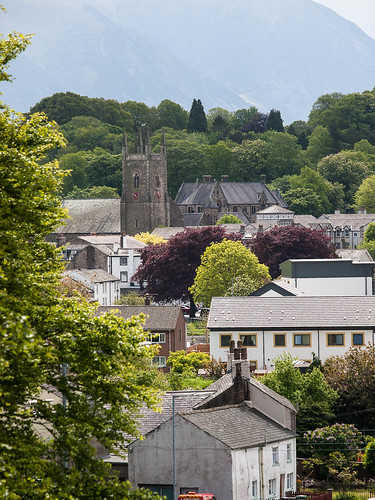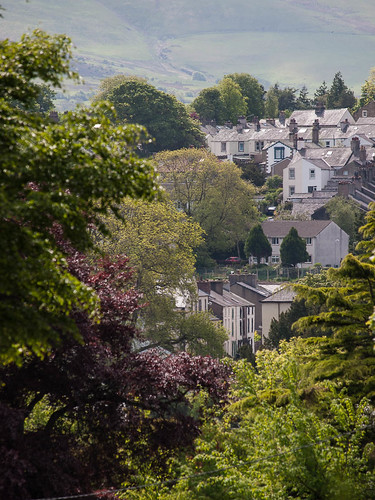Currently working my way through Malcolm Andrews “Landscape and Western Art” – and a fascinating read it is too. Chapter 5 – Framing the View rubs shoulders with a couple of issues I’m currently mulling over.
One is purely practical – the exercise on the “compression” effect seen when using longer telephotos in a landscape setting, which overlaps with his discussion on theatrical set design which uses 2-D stage flats to give the impression of 3-D scenery. My “Playing with sunsets” post a couple back makes use of that effect, and it can also be seen to some degree in these shots taken from a hill to the west of Cockermouth.
While the clustering of 2-D flats in these images makes it unlike a stage set in that there is nowhere for the actors to stand the visual effect is still quite strong. A quick search through my Flickr photostream shows that this isn’t an effect I use with much regularity there are a couple of other locations relatively near home where I could use it to good effect.
In the same chapter there is a discussion on classical advice about needing to choose a scene which can be taken in without turning the head, and the use of internal frames to help achieve that limitation. This appears to be out of consideration for the principle view – which would change as the head moved. I have to say that is one of the attractions of panoramas for me – that except at small sizes you basically have to look at the photo – you can’t take it in in a single glance. One of the illustrations used is Train Landscape, 1940 by Eric Ravilious – which shows a view of one of the many White Horses carved on the southern downs through the three separate windows of a period train carriage. I can’t help wondering is the triptych effect might be of use in defeating – or at least giving the impression of defeating – single point perspective, by fooling the brain into thinking that the 3 separate images were in fact continuous.


No comments:
Post a Comment